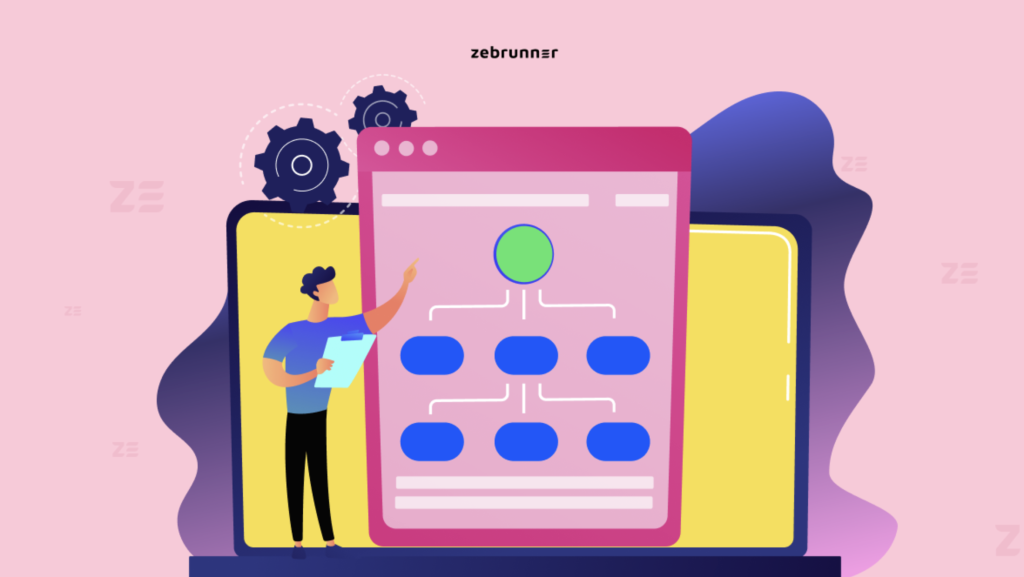The success of any business depends on its relevance, profitability, and consumer loyalty, which is directly related to the quality of the product and the rapid adaptation of the product to the changing needs of customers. Every company aims to optimize CI/CD processes & accelerate the release cycles because delays in the launch of an update or a malfunction in the service can result in serious losses and undesirable loss of competitiveness. The attempt to speed up testing often rests on huge costs. Let’s figure out in this article how parallel testing can eliminate this bottleneck.
Parallel testing: what it is & how it differs from sequential testing
Contents
Parallel testing is a special technique of testing multiple applications or their components against numerous testing configurations simultaneously to diminish test execution time considerably.
For instance, you have to execute 20 tests and you know that a single test needs 1 minute to run. During sequential testing, tests will be run one by one, so the total execution time will be 20 minutes. But, if you distribute 20 tests across 20 parallel threads, the overall time takes only 1 minute.
Imagine, that your software is covered by 1000+ automated tests, the total execution time can take more than 8 hours. It may result in release delays and inquiries for additional resources. Parallel testing allows you to run automated tests extremely fast, get the test feedback & resolve bugs earlier.
When to perform parallel testing
Parallel testing is suitable for most of the testing scenarios, but the most important reasons to conduct it are described below:
- to make sure that the updated version of the app works accurately
- to provide compliance and non-compliance between the old and the new version
- to verify the integrity of a new software
- to check if the data format has changed between the two versions
- to test the application across different combinations of devices, browsers, Operating systems
Core benefits of parallel testing
Velocity
Sequential testing requires lots of time. While for parallelization you just need to create one test script & execute it against the necessary mobile devices or browser combinations simultaneously, reducing the testing time at times.
Cost Balance
Setting up and maintaining your own infrastructure can be extremely expensive. Furthermore, there is Selenium Grid solution with flexible pricing in the market. The infrastructure is launched when you need it and only for the time you need it.
Wide test coverage
The ability to test concurrently different browsers combinations & platforms on multiple real devices or simulators/emulators diminishes the risk to release the product with bugs.
Streamlining of CI/CD processes
Parallelization allows QA engineers to test applications as soon as developers submit new code changes across the whole Software Development Life Cycle. Fast test feedback as well as in-time insights not only facilitate bug fixing process but leverage the communication between development & testing departments.
Common issues for implementing parallel testing
Choosing the infrastructure
Companies are faced with a choice – to build their own infrastructure or trust existing cloud solutions on the market. Creating in-house infrastructure is not only time-consuming but requires additional resources & strong expertise. In reality, maintaining a mature infrastructure is rather difficult and expensive. Cloud providers allow you to immediately execute parallel testing and verify if the app performs correctly on the maximum possible testing configurations right away. The issues related to scaling also become relevant when choosing between in-house infrastructure and cloud-based solutions. Here again, the last ones win, since they’re designed to scale according to the enterprise’s needs.
Data dependencies
The transition to parallel testing is very difficult for many teams due to dependencies between different test cases. There are situations where test cases depend on each other and need to be run in a specific order. Thus, the entire strategy of parallel testing collapses, because testing processes are limited. To execute tests in any order and at any time, you need to make test cases independent of each other.
In addition, the enemy of efficient parallelization is hard coding. It embeds the data directly into the source code instead of creating it at runtime, thereby creating dependencies between the above test cases. It is advisable to use a data-driven approach to set up test cases when they are executing in parallel. This will ensure that each of your tests is independent and can be run as needed.
Interpreting & managing the data
Running automated regression tests in parallel allows you to significantly reduce testing time and costs. However, as testing speed increases, the number of test results also increases. Therefore, there is a problem with how to effectively manage and analyze too many test results at the same speed as they are generated. The answer lies in the use of test automation management tools that give comprehensive visual results. Such a solution not only helps with test execution but provides advanced reporting and analytics in real-time with smart dashboards & AI/ML-based failure analysis functionality.

